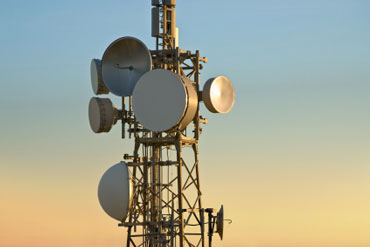April 16, 2018
When you think of an elementary school, you probably think of blackboards, pencils, erasers, notebooks - and maybe even recess. As computers and technology play an increasing role in elementary education, so has cellular connectivity for improved communications and safety.
While many younger school children do not require cell phones, connectivity is vital to the teachers and administrators that serve them. In the case of Lt. Eleazer Davis Elementary School in Bedford, Massachusetts, however, the staff was largely cut off from the world outside of the building during school hours.
Specifically, the school's principal, Beth Benoit, was cut off from communication when she was in her conference room because there was no cell signal at all in that area.
"So if there was an emergency and we were in that room, we would never know," Benoit said.
The three administrators tasked with emergency backups - via their personal cell phones - were also cut off from communication in the many areas throughout the school without strong cell signal in the event of a power outage that impaired landlines.
"Previously in the school there was no receiving calls and we were not able to send and receive texts," says Max Turkewitz, network administrator for Bedford Public Schools. "There was very little cell service except for a few pockets within this particular Davis School building."
The need for communication by administrators into and out of the school prompted the district to look for solutions to improve the cell signal throughout the building. About this time Turkewitz was in contact with Direct Network Services, who introduced him to the WilsonPro cell signal boosters. Direct Network Services had previously installed a cell booster system for the Bedford Fire Department in a very challenging near-to-far environment where AT&T was the strong signal and Verizon the weaker signal.
The solution was a good fit because it was cost-effective, which is a key factor for budget-conscious schools. It met their goals of improving connectivity, and thereby increasing student and staff safety throughout the building. Passive DAS also gave the Davis School the ability to install boosters in various areas throughout the building to improve signal without requiring an invasive change to the infrastructure.
Passive DAS works with the existing outdoor cellular signals. Boosters capture the signal, bring it inside, and amplify it by as much as 32x to provide a strong, reliable signal inside the building.
The Bedford School District's superintendent was familiar with WilsonPro and contracted with Direct Network Services to survey Davis and the other schools in the town, create a design for the cellular system, and install the equipment at the Davis school.
"The design was done to allow for easy expansion to the new addition when it is built," Dan Kirkland, chief engineer at DNS said. The installation was completed in August, ahead of the start of the school year.
The project included the installation of two WilsonPro 70 Plus 50 Ohm boosters, and one outdoor directional antenna. The 70 Plus is a bidirectional amplifier that detects and collects cell signals that are more faint than what can be picked up by a mobile phone. The boosters then amplify that signal to a useable level and broadcast it via 12 Omni antennas that were installed inside school building.
"We don't have any issues with cell coverage since the installation," Benoit said.
Implementation of this passive DAS system was simplified thanks to existing cabling throughout the building that was previously intended to boost a specific carrier network throughout the school. The passive DAS solution, however, proved to be much more cost effective. The existing cable was reused to support the WilsonPro boosters, which are carrier-agnostic and allow anyone on any network to benefit from an improved cellular signal.
The project involved replacing the antenna outside, replacing booster and internal antennas inside the building. Additional cabling was used to increase the number of internal antennas. Kirkland said, "This enabled coverage for future use at the higher frequency bands."
Whether or not cable exists, passive DAS installations typically take a fraction of the time required for a traditional, or active DAS, boosting solution because there is no need to break into walls to add fiber optics or other complex infrastructure.
Immediate improvement in cellular signal
Once the solution was installed, Turkewitz said that Davis Elementary School saw an immediate improvement in cellular connectivity. Prior to the installation, when all district administrators were in a staff meeting within one area of the Davis building, that entire staff would be cut off from both incoming and outgoing communications. This posed a number of problems, the most obvious being that it was a safety concern.
"In those meetings with all administrators in that one area, they still need to be accessible in case of a problem at another school or any type of emergency during that time," Turkewitz said. "And at Davis, it's important that the principal can always make and receive calls. If the (land) phone lines coming in are jammed because there is some emergency and she needs to make a phone call out or to the superintendent's office, which needs to be an option." For parents, it's also become more important that they know they get in touch with students and staff in the event of an emergency.
Now, thanks to the passive DAS solution, all of those communications have become a reality and administrators are able to better communicate back and forth, internally and externally.
"People now have clearer communication in more places throughout the building," Turkewitz said.
Based on the success of the cell signal boosters at Davis, the Bedford Public Schools are planning to deploy passive DAS solutions at the four other schools in the district.
To learn more contact Direct Network Services, today.
Contact us at 978-952-6000 or email us at sales@directnetserv.com.
